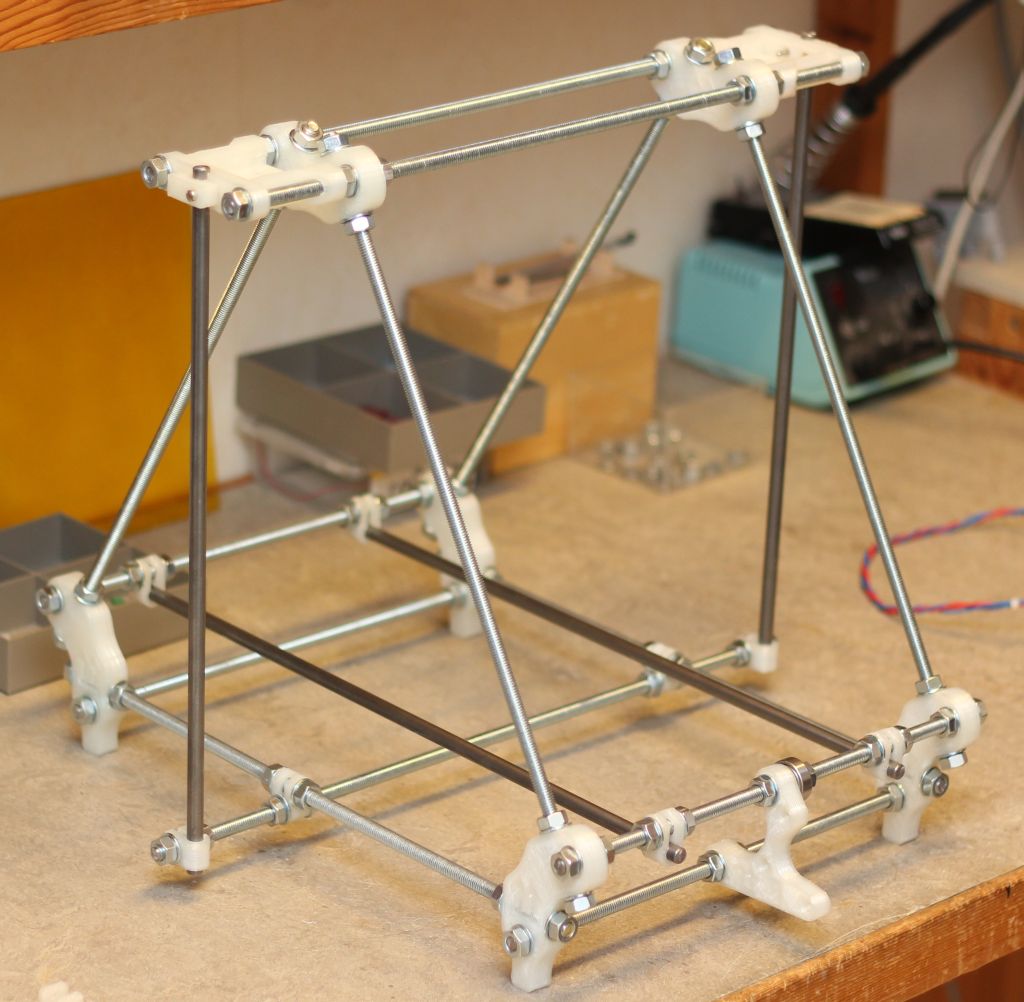Software installation
The first step is to install the software needed:Virtual COM port
The 3D printer is connected to the PC using an USB cable. After installing the driver you will get an extra (virtual) COM port through which the printer can be accessed.Pronterface
 |
| Pronterface |
Sprinter
Sprinter is the firmware for the 3D printer. The software runs on the 3D printer itself. The 3D printer lend to me has the Sanguinololu 1.3a board. At the time of this writing, the software is based on Arduino 0023. So you need to install that specific version if you need to compile this software. Check the Sprinter page if this is still true.Arduino
Arduino 0023 is used to compile Sprinter.ABS or PLA?
ABS requires a functioning heat bed while PLA can be printed on a heat bed at room temperature. Because I do not have a power supply that is able to provide the amount of current needed by the heat bed PCB, PLA is the only option for me. PLA is made from corn and melts around 185 degrees Celsius ABS is an oil product and is used in 3D printer at a temperature of 220 degrees Celsius.A new hobbed bolt
When I bring nozzle of the printer to temperature and extrude some PLA, the same thing happens again and again: after some time, the filament stops while the extrusion motor and bolt are still spinning. |
| The extruder |
 |
| Original hobbed bolt |
 |
| New hobbed bolt made by Coen |
Extruder calibration
After installation of the virtual COM port driver and Pronterface, you can use Pronterface to connect to the printer. Select the correct COM port and hit the Connect button.
Use the extrude button to calibrate the extruder. First remove the hot end from extruder so that the filament can run freely without any obstruction. Mark the filament and hit the extrude button after filling in 100 mm.
Now measure the amount of filament run though the extruder. When it is not exactly 100 mm (+/- 1 mm), you must make a correction in the Sprinter firmware. Open the Sprinter file Configuration.h and search for the lines:
//// Calibration variables
// X, Y, Z, E steps per unit - Metric Prusa Mendel with Wade extruder:
#define _AXIS_STEP_PER_UNIT {80, 80, 3200/1.25, 700}
700 is the value you have to update. With my hobbed bolt a value of 633.6 gave the correct amount of throughput. Compile and upload to the printer. First I got next error message:
avrdude: stk500_getsync(): not in sync: resp=0x00
avrdude: stk500_disable(): protocol error, expect=0x14, resp=0x51
I fixed that by lowering the upload speed. To lower the upload speed, open the file C:\Program Files\arduino-0023\hardware\Sanguino\boards.txt and change the line atmega644.upload.speed=57600 to atmega644.upload.speed=38400.
A flat surface to print on
After I got the extrusion speed correct it turned out that the heated bed PCB was not flat. It was somewhat bathtub shaped. With a height difference of three mm. That was fixed with a piece of glass on top of the heated bed. Now try to print a 0.5mm_single_wall_calibration_piece. First result: |
| Printing directly on the glass surface |
 |
| Print result after adding blue tape to the glass surface |
 |
| Print result after blowing air while printing |
A different head
Every time I try to print something, the filament gets stuck. First the hobbed bolt was the suspect, but that has been fixed. Next suspect is the hot end. As an experiment the hobbed bolt and gears are removed so that the filament can be extruded by hand. At the start it is easy to push the filament down, but after a short while, the filament blocks. Than it is not possible the push the filament down. The friend who also created the hobbed bolt read positive things about the J Head. He ordered one and put it in place. The image below shows the result after printing the single wall calibration piece. |
| Woohoo: good results with J Head! |
 |
| The pencil hinge that started the 3D printer journey |
 |
| Printing parts for a 'child' printer |
 |
| The first child printer (Coen's) begins to take shape |


No comments:
Post a Comment